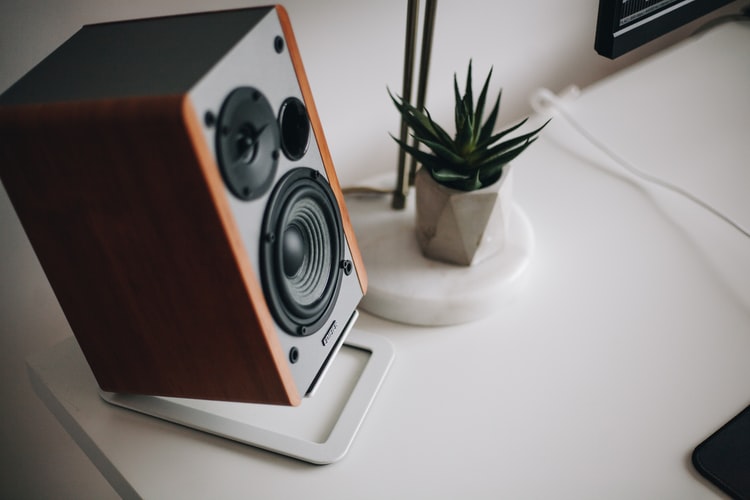In order to achieve some specific results, you will have to connect two speakers to one amp. One thing you need to know is that the volume controls will be dedicated to both speakers in this setup, you won’t be able to adjust the volume individually on each speaker. Therefore, connecting two speakers to one amp is a nice way to expand your home theater system or a similar audio system.

How to Connect Two Speakers to One Amplifier
Depending on the impedance of the equipment you have, you can connect the speakers to the amp using the parallel or the series approach.
The series approach can be applied if the speakers require less ohms than the amp. On the other hand, if they require more ohms, than the parallel approach is a better option.
One of the important things to remember here is that in this case we are not talking about a stereo amp. If that was the case, we could connect the speakers individually. In our case here, we want to connect two speakers to one amplifier. To do this properly the final goal would be to match the output impedance of the amplifier and the speakers. Therefore, it is important to check the specs of the speakers in the home theater system.
Two Methods to Connect the Speakers to One Channel
When using the series approach adding the impedances is the key point. For example, if you are using two 8-ohm devices, it means you will need to manage 16 ohms. Ideally in this case you will need an amp that can support a 16-ohm setup.
In case your amp doesn’t support 16-ohms, let’s say it supports 12 or 8 ohms, then you will need to apply the parallel approach.
Follow these steps depending on your current situation.
The Series Method
- Connect the negative terminal of the amp and the negative terminal on one of the speakers.
- Now connect the positive terminal of that speaker with the negative one of the second speaker.
- And finally connect the positive terminal of the last speaker needs to be connected to the positive terminal on the amp.
When you finish connecting the terminals it is important to test everything. Generally speaking, everything should work fine, but if you hear static, crackling sounds or muffled audio then you are probably having a problem with a loose wire. Also, this approach will affect the loudness of your speakers so keep that in mind.
The Parallel Method
- The negative amp terminal should be plugged to the same connection of the first speaker.
- Now connect the negative terminal of the first speaker to the second one. Yes, there will be two wires coming from the negative terminal of the first speaker.
- Now the positive terminal of the amp should be connected to the positive terminal of the first speaker.
- Now the positive terminals of the first and the second speaker need to be connected. Once again there will be two wires coming from the positive terminal of the first speaker.
Just like with the serial approach if you notice any audio problems check the setup for loose wires.
Can this connection damage my speakers or amp?
If you do the math correctly there will be no problems connecting two speakers to one amp.
If the impedance of the speakers is higher than the one in the amp, then it can damage the system. For this reason, it is important the impedances to match or even be lower than the amp.
When you are buying a home theater system the possible setups will be shown up. Therefore, we recommend following the steps presented here to avoid any unintentional damage.
The ohms rules apply when you have speakers from the same manufacturer and also if the speakers are from different manufacturers.
However, the series approach is generally not recommended by most manufacturers since this setup affects the sound quality.
To Sum Things Up
As you can see there are two ways to connect two speakers to one amp. Whether you will choose the parallel or series approach depends on the impedance of the equipment you have.
If the speakers have an impedance of 8-ohms or more each, the best would be the parallel connection to reduce the load of the amplifier. If the impedance of the speakers is lower than the series approach will do the job just fine.
The benefits of connecting two speakers to one amp are simplified controls. This means you won’t be able to adjust the volume on each speaker separately.
Both approaches work great when you know the impedance of the devices you use. In case you don’t know the impedance, it is better to assume that their impedance is higher just to avoid any accidental damage.
